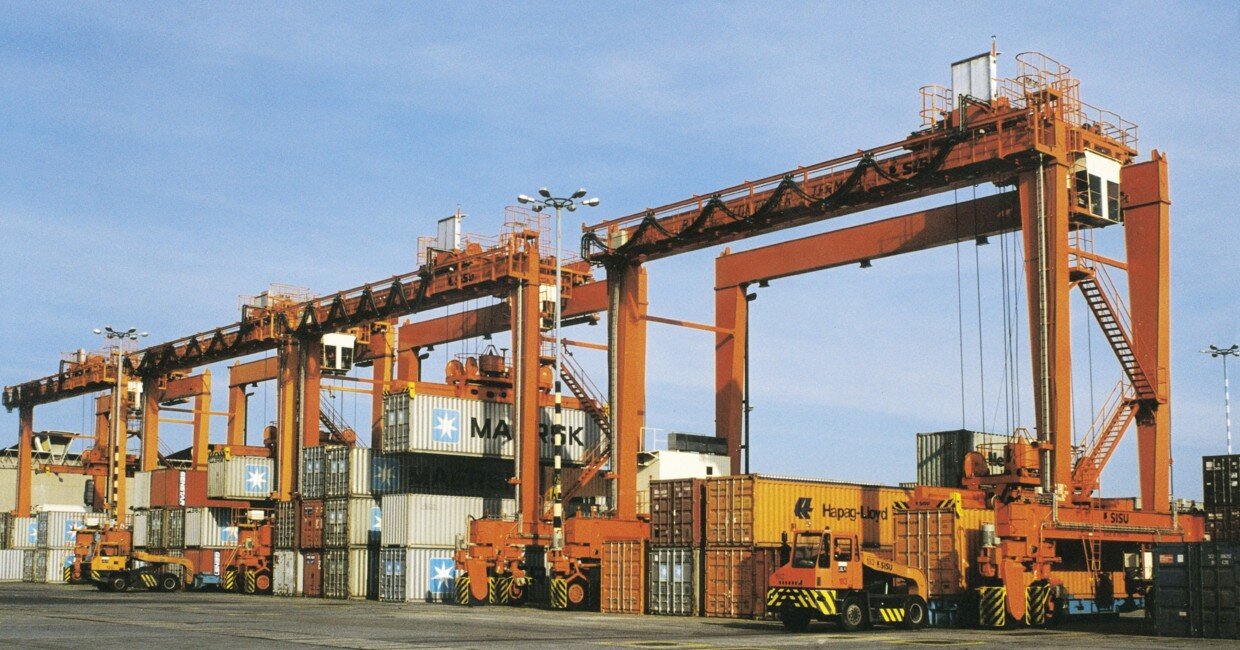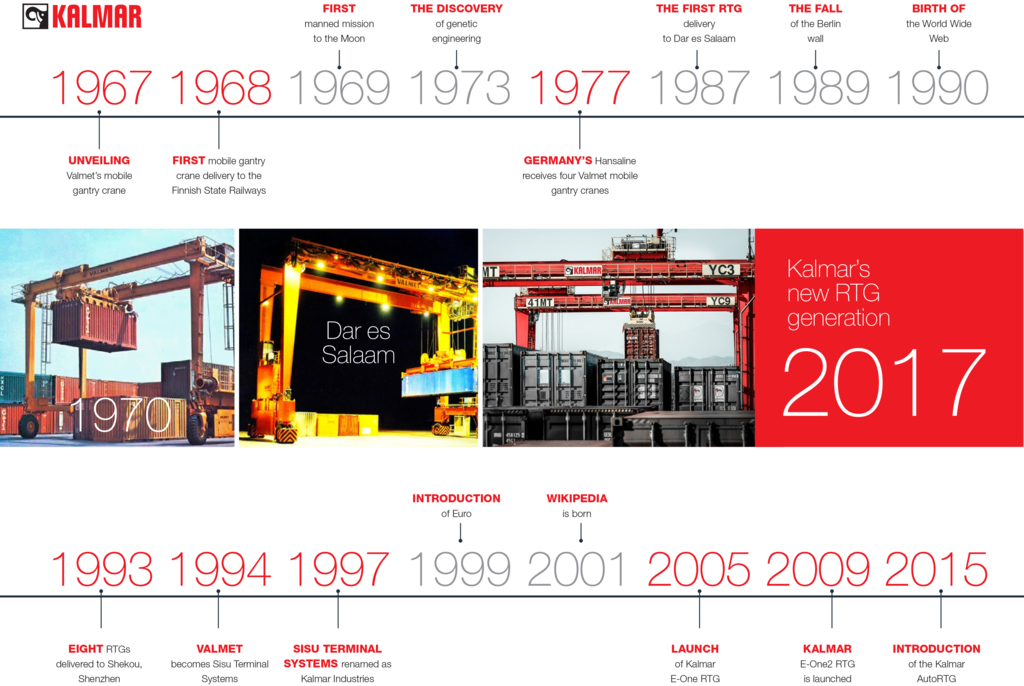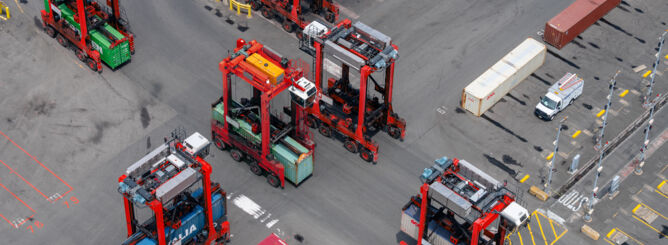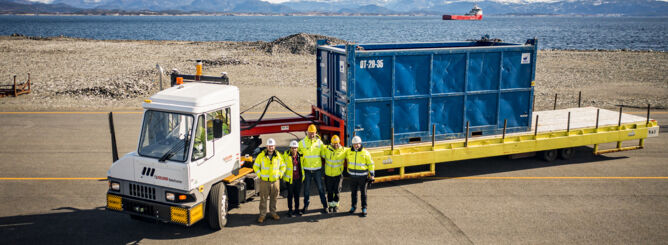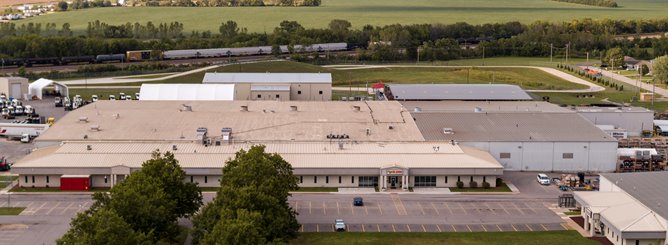Half a century of RTG history
While the cutting edge solutions of RTG technology continue to represent the latest innovations in container handling, the very first steps of Kalmar RTGs can be traced back to over 50 years ago – all the way to 1967.
“We have lift-off!”
The year was ‘67. Two years before Apollo 11 would historically launch men to the moon, a very different kind of lift-off was taking place at Tampere, Finland: the unveiling of Valmet’s brand new Mobile Gantry Crane. Ordered by the Finnish State Railways to solve their logistical challenges, the diesel-hydraulic MGC was – at its time – a state-of-the-art solution for combining the heavy lifting power of gantry cranes with the added benefits of mobility.
As a forefather of the RTG, the early Mobile Gantry Crane in Tampere offers a fascinating glimpse into the lineage of Kalmar’s gantry cranes. In fact, all the way from 1967 to 1993, Kalmar (then Valmet and later, Partek Corporation) had delivered 43 diesel-hydraulic MGCs around the world.
Where the past meets the future
Real innovations are often timeless. And here is a great example: the concept of straddle carriers working together with mobile gantry cranes. Many would believe that such a seemingly modern invention was first dreamt up somewhere in the 2000s, but the very first concept images actually date all the way back to 1971. Jumping from the seventies to 1987, we find the history of port cranes changing for good. After years of service, mobile gantry cranes were finally making way for the next generation of crane technology: rubber-tyred gantry cranes, also known as the RTGs.
The RTG had three significant advantages over its predecessor: size, lift capacity, and productivity. A mobile gantry crane had only four wheels, which meant that compromises had to be made with the crane’s size. RTGs, on the other hand, had eight wheels and could stack containers 1-over-3 high. Their increased size also enabled bringing in more containers per hectare. Containers used to be lighter around the days of mobile gantry cranes, with a maximum lift capacity between 22 to 30 tonnes. RTGs, thanks to their larger size, far outweighed this by being able to lift up to 41 tonnes.
But the biggest game changer to tip the scale in favour of RTGs was indeed productivity. With the increasing focus on moves per hour at every modern port, a solution was needed to handle heavy loads with speed and dexterity. The RTG was designed to meet these requirements, with 400 horsepower compared to the inferior 130 hp of mobile gantry cranes.
Today’s echoes of Kalmar’s RTG history
The first RTG delivery by Valmet (later to become Kalmar) took place in 1987, with Tanzania’s port of Dar es Salaam as the first destination for five RTGs. In 1993, Shenzhen’s Shekou Container Terminal followed, with eight delivered RTGs. This started a steady succession of deliveries around the globe that cemented the RTG’s position as one of Kalmar’s flagship products.
1997 saw the launch of the next generation of AC electric powered RTGs, along with an own PLC SW – providing Kalmar with the availability of in-house electrical engineering. In 2005, there was another milestone: the introduction of the Kalmar E-One RTG, the first fully electric RTG without any hydraulics.
When the initial early concepts of RTGs were designed in the early 80s, a certain set of attributes were listed as its desired features: an AC electrical system, induction motors, low maintenance operability, better cost-efficiency, a lighter build compared to conventional port cranes, and the possibility for utilising standard components.
Lower maintenance, energy efficiency, better productivity. It’s been there for 50 years.
Looking at this list in 2017, it’s almost startling to see how successfully Kalmar’s RTG lineup has continued to follow its initial philosophy. Lower maintenance, energy efficiency, better productivity. It’s all there. In fact, it’s been there for 50 years now. With a half a century of pioneering experience in port crane technology and over 1,000 RTGs delivered across the world, nothing would suggest otherwise for the next century of Kalmar cranes.
Because real innovations are timeless.
